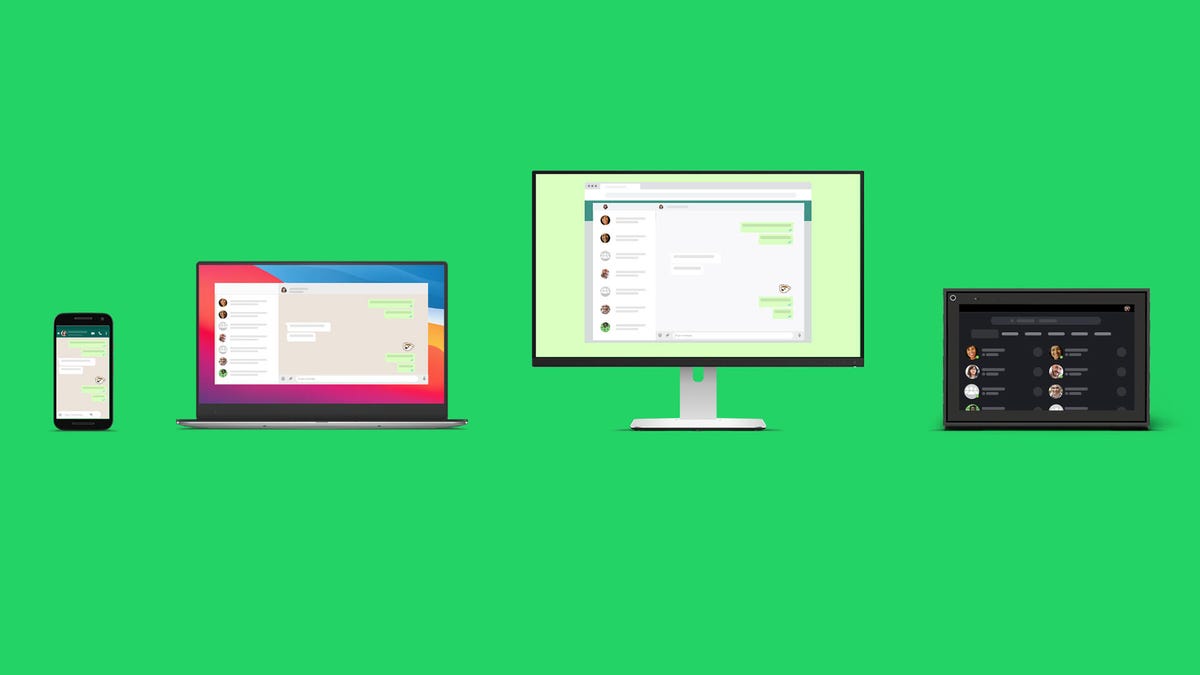WhatsApp starts testing multidevice capability, explains how it works
There's still end-to-end encryption.

WhatsApp is rolling out a limited public beta test for its updated multidevice capability.
The Facebook subsidiary plans "to initially test the experience with a small group of users from our existing beta program," according to a Wednesday post on Facebook's engineering website.
With the beta, first teased in June, users will be able to use WhatsApp on a phone and up to four linked companion devices simultaneously, even if their phone battery dies. Each device connects to a user's WhatsApp account independently and maintains end-to-end encryption.
Facebook says it developed new technology in order to maintain end-to-end encryption while also syncing data like contact names and chat archives across devices.
The current WhatsApp experience, before this beta, uses a phone as the primary device and has companion devices mirror the phone's contents with their user interfaces. Because they rely on a phone to operate, companion devices are slower and frequently get disconnected.
"The new WhatsApp multi-device architecture removes these hurdles, no longer requiring a smartphone to be the source of truth while still keeping user data seamlessly and securely synchronized and private," according to the post.
WhatsApp says it'll continue optimizing performance and adding features to the new capability before rolling it out more broadly. Eligible users can sign up for the beta in the WhatsApp help center.

